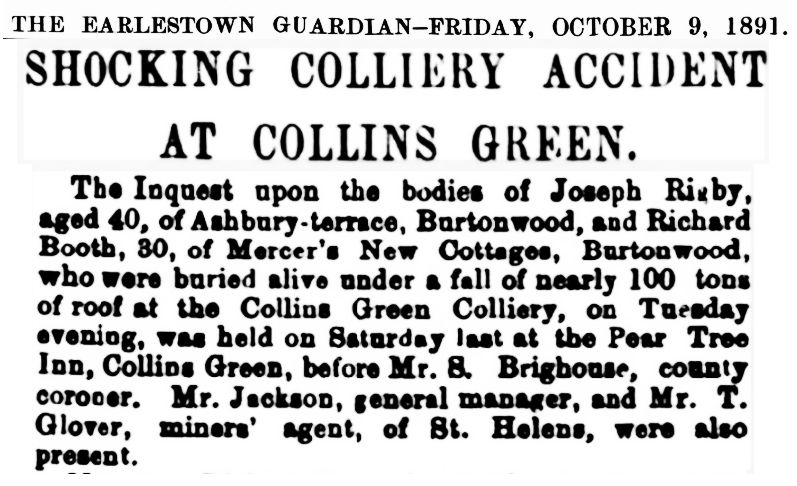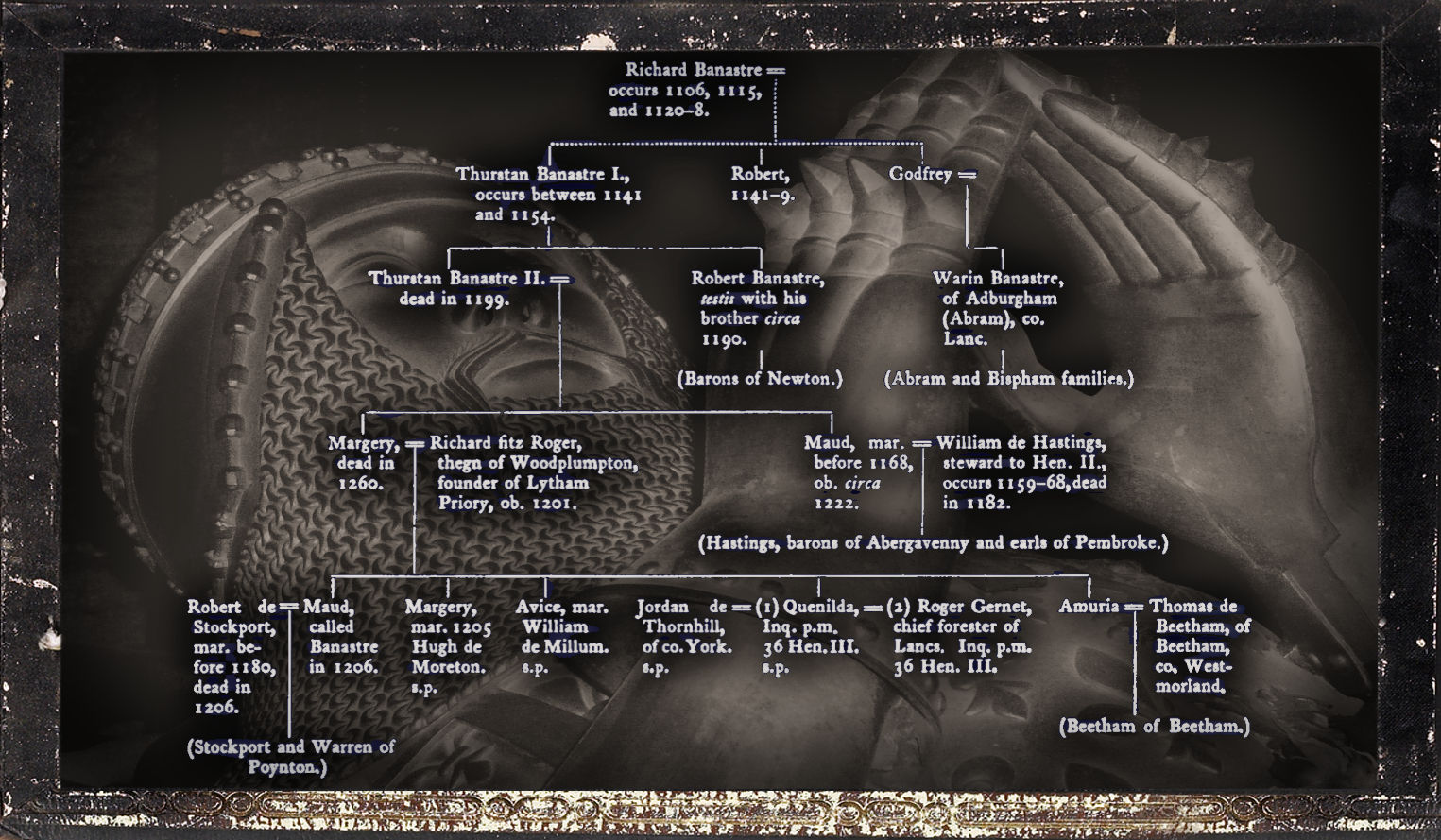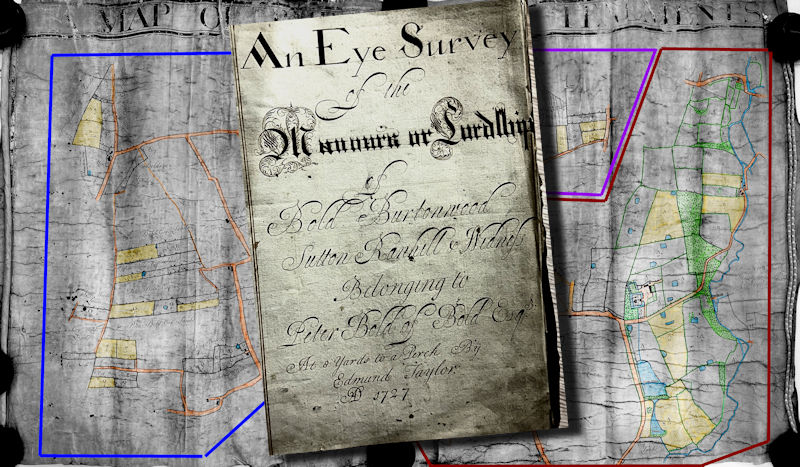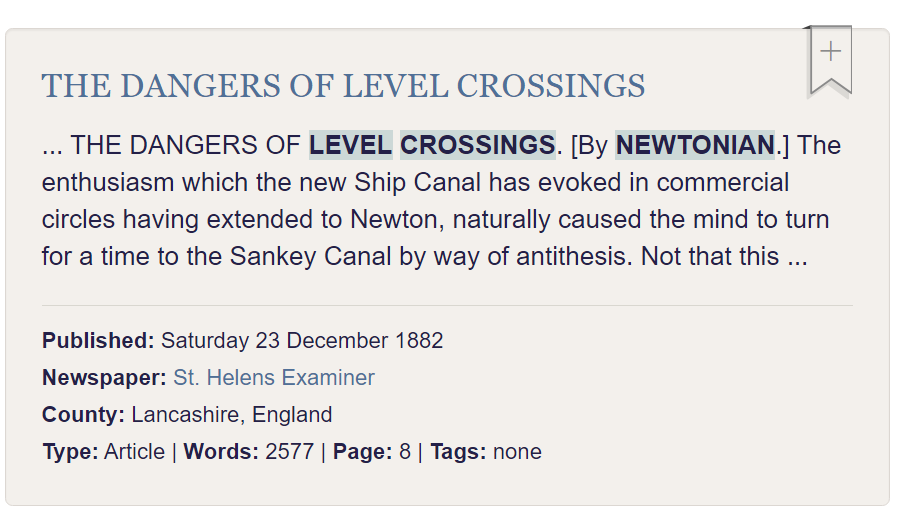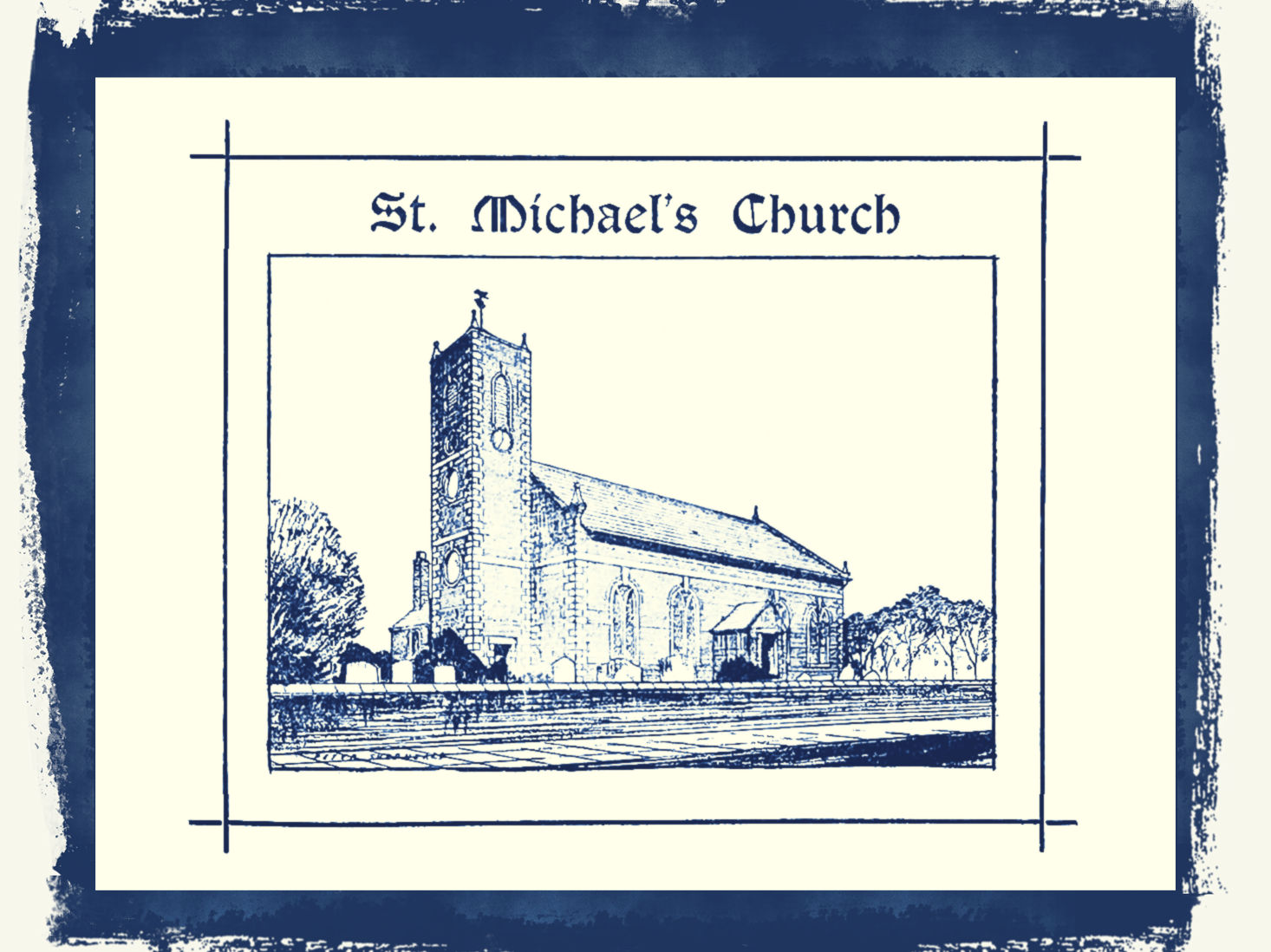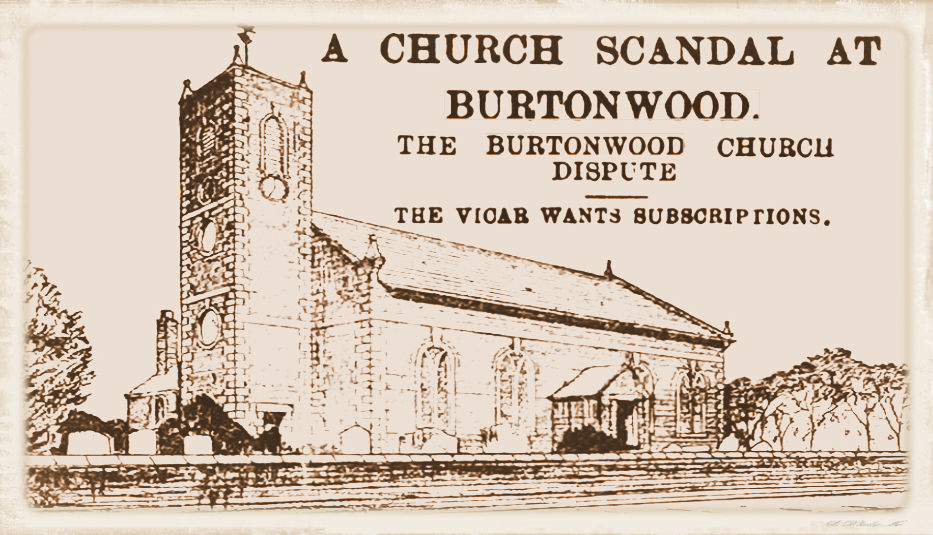Newton and Earlestown Guardian – Friday 09 October 1891 The Inquest upon the bodies of Joseph Rigby, aged 40, of Ashbury-terrace, Burtonwood, and Richard Booth, 30, of Mercer’s New Cottages, Burtonwood, who were buried alive under a fall of nearly 100 tons of roof at the Collins Green Colliery, on Tuesday evening, was held on Saturday last at the Pear Tree Inn, Collins Green, before Mr. 8. Brighouse, county coroner, Mr. Jackson, general manager, and Mr. T. Glover, miners’ agent, of St. Helens, were also present. Mrs. Ann Rigby last…
Read More >>Tag: Local History
Coloured views on the Liverpool and Manchester railway
So most people know how mad I am about local history, and over the years I have had various copies of the different reproduction historical books of the 1831 TT Bury “Coloured views on the Liverpool and Manchester railway” but have never been able to buy or afford an original book, which sell with 6 to 12 prints at anything from 6000 to 12000 pounds. But, I think that I’ve managed to buy an original 1831 Ackerman of Plate 4, showing the “Viaduct across the Sankey Valley” which is brilliant…
Read More >>THE BARONY OF NEWTON IN MAKERFIELD
Historical Overview This liberty is almost conterminous with the Domesday hundred of Newton. During the twelfth century, it was included in the ‘corpus comitatus,’ or sheriff’s charge, at the assized rent of £8 16s. 4d., increased to £11 11s. 4d. in the year 1201. When Robert Banastre received it from Henry II, these lands appear to have been subject to the yearly payment of the former sum. When delivered to his son by the crown in 1204, the tenure was partly by knight’s service and partly in socage. The Banastre…
Read More >>A Timeline of Newton History
Timeline of Newton in Makerfield and Newton-le-Willows This timeline offers a comprehensive overview of the significant historical events that have shaped the regions of Newton in Makerfield and Newton-le-Willows. Spanning from the 12th century to the modern day, the timeline highlights key developments, including landmark charters, pivotal societal changes, and major infrastructural projects that have influenced the growth and evolution of these areas. By documenting these events, the timeline not only chronicles the rich history of Newton in Makerfield and Newton-le-Willows but also reflects the broader historical trends in governance,…
Read More >>Burtonwood in 1727
An Eye Survey of the Manour or Lordship of Burtonwood Belonging to Peter Bold of Bold Esq. At 8 Yards to a Perch by Edmundo Taylor A.D. 1727 Burtonwood Land Renters Henry Taylor Description A (Acres) R (Roods) P (Perches) £ (Pounds) S (Shillings) D (Pence) Site, Orchard, Fould, & Croft 0 2 0 2 0 0 Meadow 0 3 0 1 4 0 Dean croft nook 1 0 0 1 4 0 Three acre 3 0 0 2 8 0 Four acre 4 0 0 3 12 0 Two…
Read More >>The Dangers of Level Crossings
Saturday 23 December 1882 The enthusiasm which the new Ship Canal has evoked in commercial circles, having extended to Newton, naturally caused the mind to turn for a time to the “Sankey Canal” by way of antithesis. Not that this was the first canal made in England by any means, for the Romans, during their residence in England, cut a canal from the vicinity of their metropolis, the city of York, as appears from Drake’s Eboracum. In the year 1121, Henry I made a navigable canal of seven miles in…
Read More >>1901: A Fortunate Newtonian: “Struck Oil” in Texas
St. Helens Examiner – Friday 06 December 1901 Information has just reached Newton that Sam Crowther, whose parents once managed the Old Crow Inn on Crow Lane in Newton about 25 years ago, has suddenly become one of the richest men in Texas. Raised in Newton at the Old Crow Inn, Sam Crowther experienced his formative years and early adulthood there. After his father passed away, his mother remained a widow for several years before remarrying Mr. Joseph Shona, who still resides at the Old Crow. Following their mother’s death,…
Read More >>Burtonwood tenants in ye year 1700
A survey of several Tenants within ye manner of Burtonwood in ye year 1700 belonging to Peter Bold Esq. (&) John Howasdon, Thom. Chorley Burtonwood James Travers of mess & tenement:1 acre, 1 Rood, 0 Perch || £2, 16 Shillings, 0 Pence Wm Lawton of mess & tenement:31 acres, 2 Roods, 0 Perch || £19, 10 Shillings, 0 Pence Mary Holt widow of mess & tenement:15 acres, 0 Roods, 0 Perch || £7, 0 Shillings, 0 Pence John Bay for Godshouse land of mess & tenement:1 acre, 0 Roods, 0…
Read More >>Burtonwood Township 1210 – 1939
St. Michael’s Church, Burtonwood. 1716 – 1939 This Book is dedicated to the Glory of Almighty God as a special means of expressing the grateful thanks of the Parishioners of Burtonwood, for the realisation of their desire in the completion of the Restoration and Enlargement of St. Michael’s Church on St. Michael’s and All Angels Day, 1939. St. Michael’s ChurchRESTORATION AND ENLARGEMENT COMMITTEE, 1939. Chairman: The Vicar, Rev. Thomas Cowing, M.C., M.M.Treasurers: Thos. Forshaw, Esq., John Gleave, Esq.Secretary: C. V. Smith, Esq., M.M.Architect: E. J. Dod, Esq., A.R.I.B.A. Diocesan Surveyor,…
Read More >>THE FEE OF MAKERFIELD. Part II.
By William Beaumont, Est/.(published and read 20th March, 1878.) On a former occasion, when I had the honour of reading before this Society u paper on the above title, I intimated that l might on some other occasion, if I had time and you had patience, be led to continue the subject. In mv former paper I traced the Barons of Newton through the successive lines of the Bannstres and Langton’s, and ended it when, the latter family becoming extinct by the death of the last Sir Thomas Langton, Newton…
Read More >>The Burtonwood Church Dispute and Developments
A Historical Overview: The Burtonwood Church disputes highlight a complex interplay of religious, social, and personal dynamics within a small community during the late 19th century. This series of events reflects broader themes of ecclesiastical governance, community resistance, and the challenges of pastoral leadership in changing times. Detailed Chronology and Excerpts: October 30, 1891 – Death of Rev. W. Wilson Newton and Earlestown GuardianThe community of Burtonwood faced a profound loss with the death of Rev. W. Wilson, who had served the parish for fifteen years. His death was not…
Read More >>A HISTORY OF BURTONWOOD CHAPEL.
The Chapel of Burtonwood was founded by Thos. Bold Esq., by a deed of feoffment, dated 27th, Sept. 1605. He conveyed a portion of land in trust from the Waste In Burtonwood, 40 roods In length and 20 roods In breadth. The rent charge to be one penny annually to him and his heirs on the Natal feast of St. John the Baptist. It appears by the proceedings of a Commission AD.PIUS.VSUS. before John Bishop of Chester on an inquisition taken at Wigan March 28th, 1627 That Thomas Darbishire of Burtonwood Yeoman…
Read More >>Historical notes for a letter to the King
His Majesty the King, etc, Duke of Lancaster “Your Majesty,” In all humility and loyalty, certain of your subjects in the district of Burtonwood have interested themselves in completing historical records of their village and environs and contact is being made in this manner with all whose family and ancestral relationships are in any way connected with the story of Burtonwood. It may interest your Majesty to peruse the following historical data which shows the relationship between the House of Lancaster and those who lived literally at the beginning of…
Read More >>Burtonwood, a history
Transcribed with the help of Andrew Fackey from documents in Chester Archives The information has been taken from Royal Lancaster Forests. Leghs of Lyme by Lady Newton. Annals of Warrington by Beaumont. Copies of charters from Warrington Museum. Information of the Parish from books kept by the Vicars, now in Preston Records Office. Royal Forests of Lancashire.1102-1116. Whilst the honour was in the King’s hands Burtonwood, a dependent manor of Warrington was taken into the Forest even as late as the mid 14th century. The Dukes of Lancaster still claimed…
Read More >>BURTONWOOD: TIMBER to be SOLD by TICKET.
On Thursday the 8th day of February, 1827, at three o’clock in the afternoon, at the house of Mr. Isaac Turner, the sign of the Ship, at Sankey Bridges, near Warrington, in the following lots, subject to such conditions as may then and there be produced: Lot 1.102 Oak Trees and 16 Cyphers from No. 1 to 102 inclusive.16 Ash Trees from No. 1 to 16 ditto2 Alder Trees No. 1 and 2. This Timber is growing upon a Farm in Burtonwood, known by the name of Causeway Bridges, in…
Read More >>